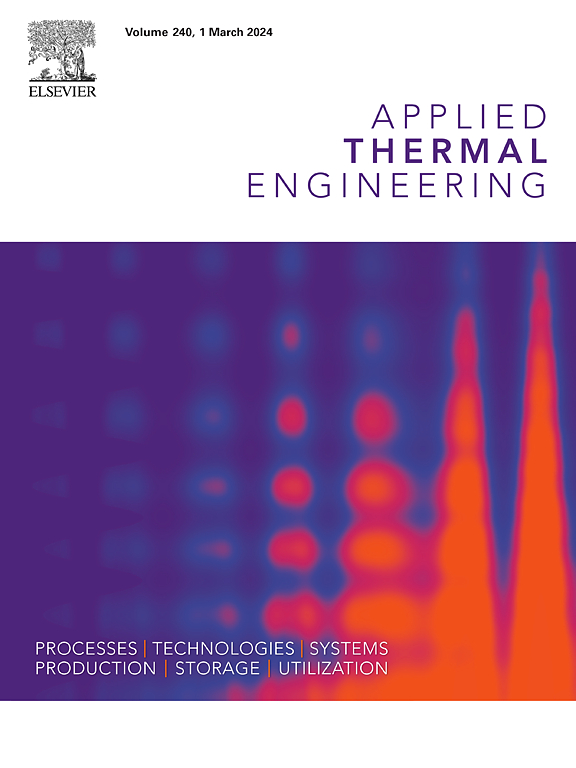Topology optimization designed twisted conformal cooling channel for additive-manufactured hot-stamping tool
IF 6.1
2区 工程技术
Q2 ENERGY & FUELS
引用次数: 0
Abstract
Hot stamping is a manufacturing process that can be used to produce complex-shaped parts with high mechanical properties. In this process, the part quality and the production rate are strongly influenced by the efficiency of the cooling system within the tool. Improving the efficiency of the cooling system is therefore a key factor in reducing production time and costs. Traditional cooling systems for hot stamping tools often rely on simple drilled channels, limiting their potential for optimization. But recent improvements in additive manufacturing of steel have made it possible to design and produce cooling channels of more complex shapes and therefore allow the use of innovative design approaches such as topology optimization. This paper proposes a new rational method for optimum design of cooling system for additively manufactured hot stamping tools. The proposed new methodology is based on fluid-thermal topology optimization (TO). A low-fidelity model using the Stokes-Darcy equations is used to simulate fluid flow in the cooling channels. The objective function and constraints are designed to minimize the maximum temperature of the tool surface (cooling efficiency) with limited pressure drop of the cooling system. Advanced computations techniques including parallel computation, stabilization techniques, adaptive mesh and iterative solvers are used to ensure the computation performance. The procedure developed is first tested on a simple example to check the consistency of the results obtained. Then, to demonstrate the contribution of our work to the field under study, the procedure developed is used to optimize the design of the cooling system for an industrial hot stamping punch to be additively manufactured. The obtained optimum design is compared with standard drilled channels design and the deign with shell and core technology (with insert). These comparisons clearly shows that the optimal design combined with additive manufacturing can reduce quenching time by 37% compared to conventional drilled straight channels, with very similar pressure drop and very similar load-bearing capacity. This research offers significant potential for improving efficiency and reducing costs in hot stamping and other manufacturing processes.
拓扑优化设计了用于增材制造热冲压工具的扭曲保形冷却通道
热冲压是一种制造工艺,可用于生产具有高机械性能的复杂形状零件。在这一工艺中,零件质量和生产率受到工具内冷却系统效率的很大影响。因此,提高冷却系统的效率是缩短生产时间和降低成本的关键因素。传统的热冲压工具冷却系统通常依赖于简单的钻孔通道,限制了其优化潜力。但最近钢材增材制造技术的进步使设计和生产形状更复杂的冷却通道成为可能,因此可以使用拓扑优化等创新设计方法。本文提出了一种新的合理方法,用于优化增材制造热冲压工具冷却系统的设计。所提出的新方法以流体-热拓扑优化(TO)为基础。使用斯托克斯-达西方程的低保真模型模拟冷却通道中的流体流动。目标函数和约束条件的设计目的是在冷却系统压降有限的情况下最大限度地降低工具表面的最高温度(冷却效率)。先进的计算技术包括并行计算、稳定技术、自适应网格和迭代求解器,以确保计算性能。我们首先在一个简单的例子中测试了所开发的程序,以检查所得结果的一致性。然后,为了证明我们的工作对所研究领域的贡献,我们使用所开发的程序对工业热冲压冲头的冷却系统进行了优化设计。将获得的优化设计与标准钻孔槽设计和采用壳芯技术(带插入件)的设计进行了比较。这些比较清楚地表明,与传统的钻孔直槽相比,结合快速成型技术的优化设计可将淬火时间缩短 37%,且压降和承载能力非常接近。这项研究为提高热冲压和其他制造工艺的效率和降低成本提供了巨大的潜力。
本文章由计算机程序翻译,如有差异,请以英文原文为准。
求助全文
约1分钟内获得全文
求助全文
来源期刊

Applied Thermal Engineering
工程技术-工程:机械
CiteScore
11.30
自引率
15.60%
发文量
1474
审稿时长
57 days
期刊介绍:
Applied Thermal Engineering disseminates novel research related to the design, development and demonstration of components, devices, equipment, technologies and systems involving thermal processes for the production, storage, utilization and conservation of energy, with a focus on engineering application.
The journal publishes high-quality and high-impact Original Research Articles, Review Articles, Short Communications and Letters to the Editor on cutting-edge innovations in research, and recent advances or issues of interest to the thermal engineering community.
 求助内容:
求助内容: 应助结果提醒方式:
应助结果提醒方式:


